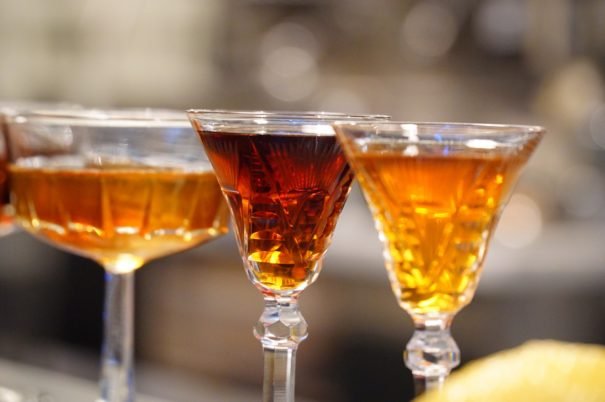
Three Cheers for Vermouth‑Drinking Italian Grandmas

Three Cheers for Vermouth‑Drinking Italian Grandmas
Vermouth in Rome
I can remember, as a child, the guilty pleasure in taking a sip of vermut (Italian for vermouth) from my grandmother’s glass, leaving my tongue sweet and my head spinning.
Later on I got to have my own splash of the drink, watered down with ice, as an official initiation into the aperitif ritual. Growing up, I left behind home and vermouth, embracing at different times beer, wine, more beer, organic wine, and gin & tonics.
I was not alone. Although vermouth held on as a key ingredient in iconic cocktails—such as the martini—the flavored, fortified wine created in Turin in 1786 by Antonio Carpano seemed to lose much of its allure as a “pure” drink over the last 30 years.
Recently, riding the vintage trend and to foster national pride in mixology, some historic brands have revamped the old-fashioned drink. (Its name comes from Wermut, the German word for Artemisia absinthium, a main ingredient for both absinthe and vermouth.)
Still, I’d never have imagined that I would turn back to my grandma’s habits. Yet, as I enter the brand new Vermut Bar at Ercoli restaurant in Rome, I have to reconsider. The 108 different labels from all over the world hint that I have no choice. Bartender Federico Tomasselli hands me a tiny vintage stem glass over the wooden counter, and there is the refreshing aroma of lemon peel soaked in the clear mix of white vermouth and a splash of soda. This is the lighter, girlie version of vermuttino, the staple after-work drink in Turin until the 60s, a forerunner to today’s aperitivo.
Real men, apparently, drink it with less soda and less ice, to better capture the botanicals: elderflower, cinnamon, nutmeg, Artemisia–of course–and others, depending on the recipe.
There is still a world of vermouths to choose from and to decipher. There are the traditional white vermouths from Piedmont, the big brands such as Martini & Rossi, and even the “evening” versions such as the Cocchi Dopo Teatro, with a distinctive bitter taste from the double infusion of cinchona. “If someone comes in and asks for an evening vermouth, this means he knows his stuff,” Federico says.
I’ll come back to taste some of Federico’s signature drinks, such as the Bianco Conciato—a dangerous mix of white vermouth, bitter angostura, Marsala, crème de violet, and mezcal—and to experiment with his tips on food pairing, like matching spiced red vermouth to gratiné oysters, or maybe a refreshing white vermuttino with Parmigiano Reggiano.
After all, I’m a lady, and I’m sure grandma would be proud of me.